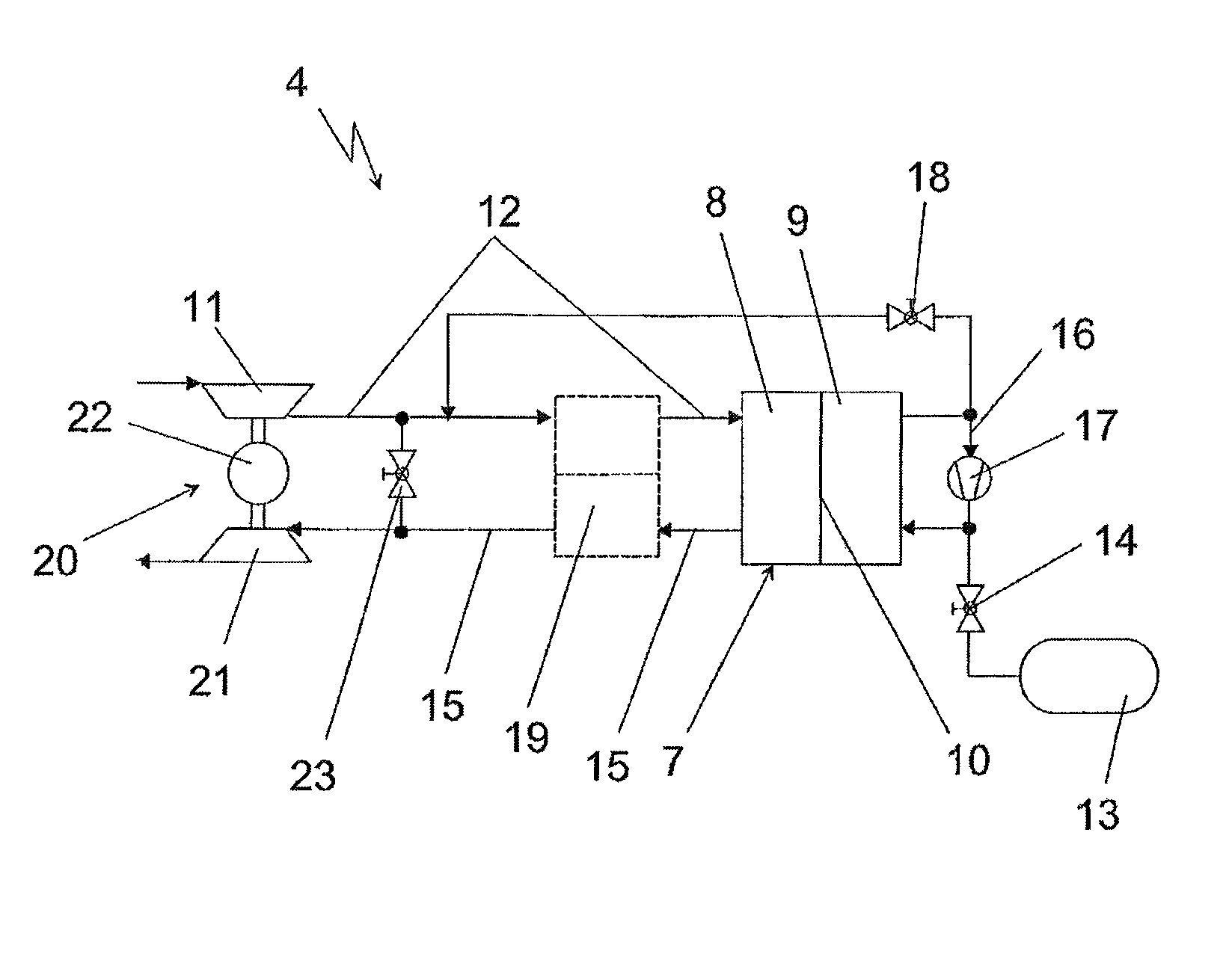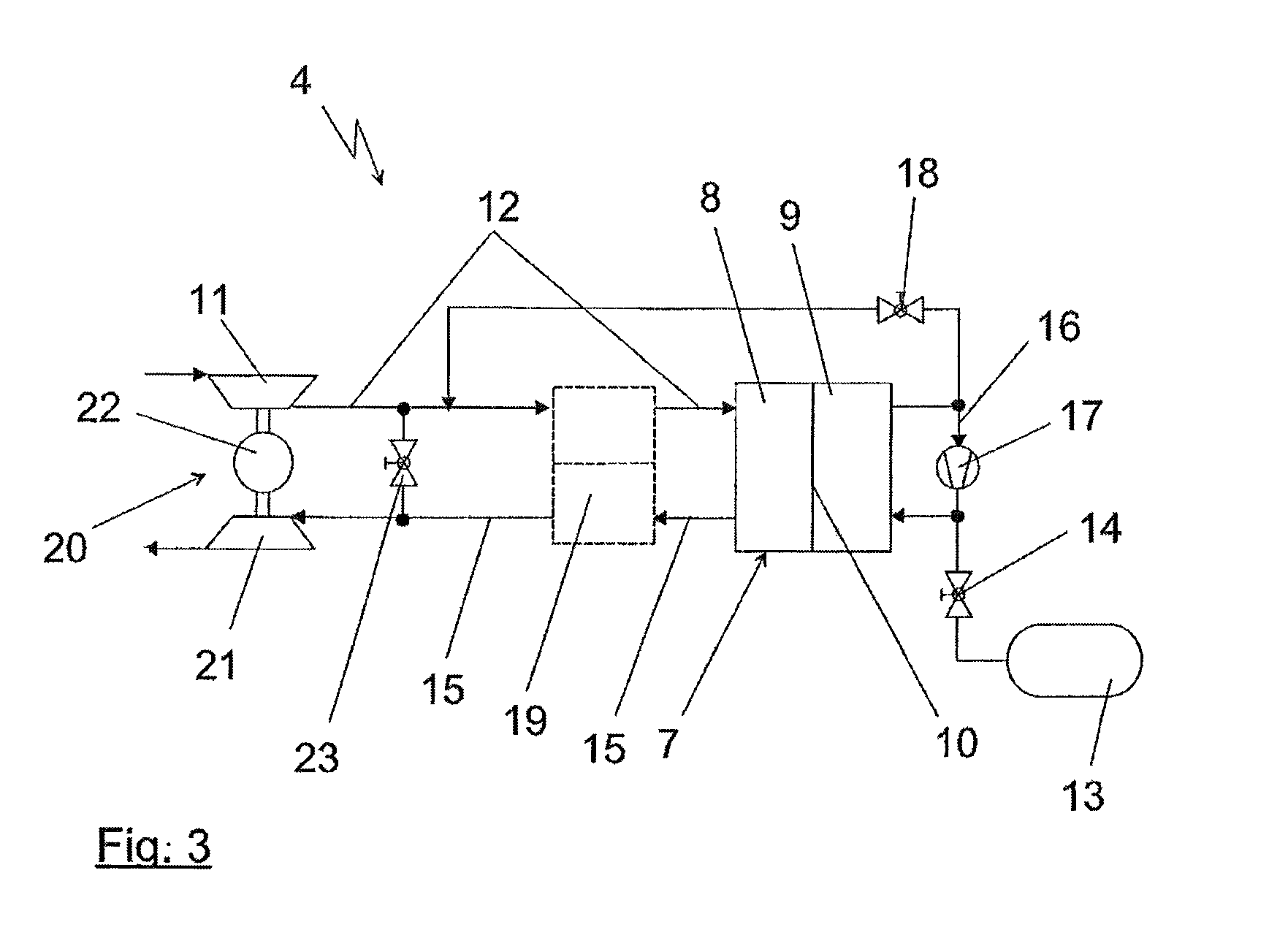Method for operation of a fuel cell system in a vehicle
a fuel cell and vehicle technology, applied in the direction of transportation fuel cell technology, electric hydrogen generators, transportation, etc., can solve the problems of reducing the service life of the fuel cell system, so as to achieve convenient and efficient transportation, maintain readiness for operation, and no corrosion
- Summary
- Abstract
- Description
- Claims
- Application Information
AI Technical Summary
Benefits of technology
Problems solved by technology
Method used
Image
Examples
Embodiment Construction
[0016]FIG. 1 shows a vehicle 1 in a greatly schematized representation, which can be moved via an electric drive motor 2 that drives two wheels 3. The vehicle 1 has a fuel cell system 4 providing the electric drive energy for the motor 2 and thus ultimately for driving the vehicle 1. This is shown in FIG. 1 via electric lines which connect the fuel cell system 4 and the drive motor 2 via an electronic unit 5 to each other. As indicated through the dotted arrows, the electronic unit 5 is also in communication with the fuel cell system 4 in order to be able to inquire, for example, about values of sensors in the fuel cell system 4 monitoring it with regard to pressure, temperature and the like. The electronic unit 5 is also in corresponding connection with a vehicle control unit 6 that is provided in the known way for controlling the vehicle. This vehicle control unit 6 is also in connection via sensors and actuators (not shown here) with the vehicle 1 and can evaluate for example acc...
PUM
| Property | Measurement | Unit |
|---|---|---|
| voltage | aaaaa | aaaaa |
| time | aaaaa | aaaaa |
| hydrogen pressure | aaaaa | aaaaa |
Abstract
Description
Claims
Application Information
 Login to View More
Login to View More - R&D
- Intellectual Property
- Life Sciences
- Materials
- Tech Scout
- Unparalleled Data Quality
- Higher Quality Content
- 60% Fewer Hallucinations
Browse by: Latest US Patents, China's latest patents, Technical Efficacy Thesaurus, Application Domain, Technology Topic, Popular Technical Reports.
© 2025 PatSnap. All rights reserved.Legal|Privacy policy|Modern Slavery Act Transparency Statement|Sitemap|About US| Contact US: help@patsnap.com



